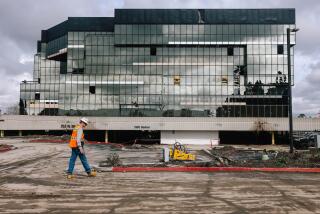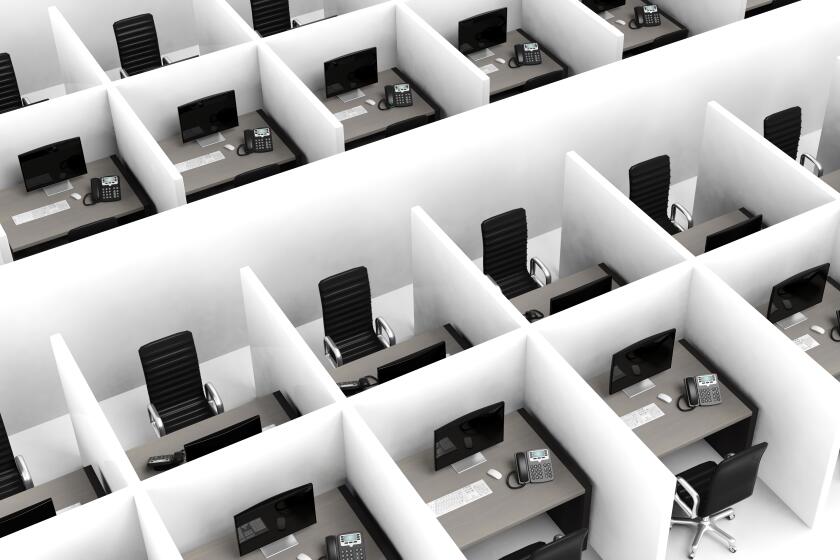Will the work-from-home revolution shrink your office?
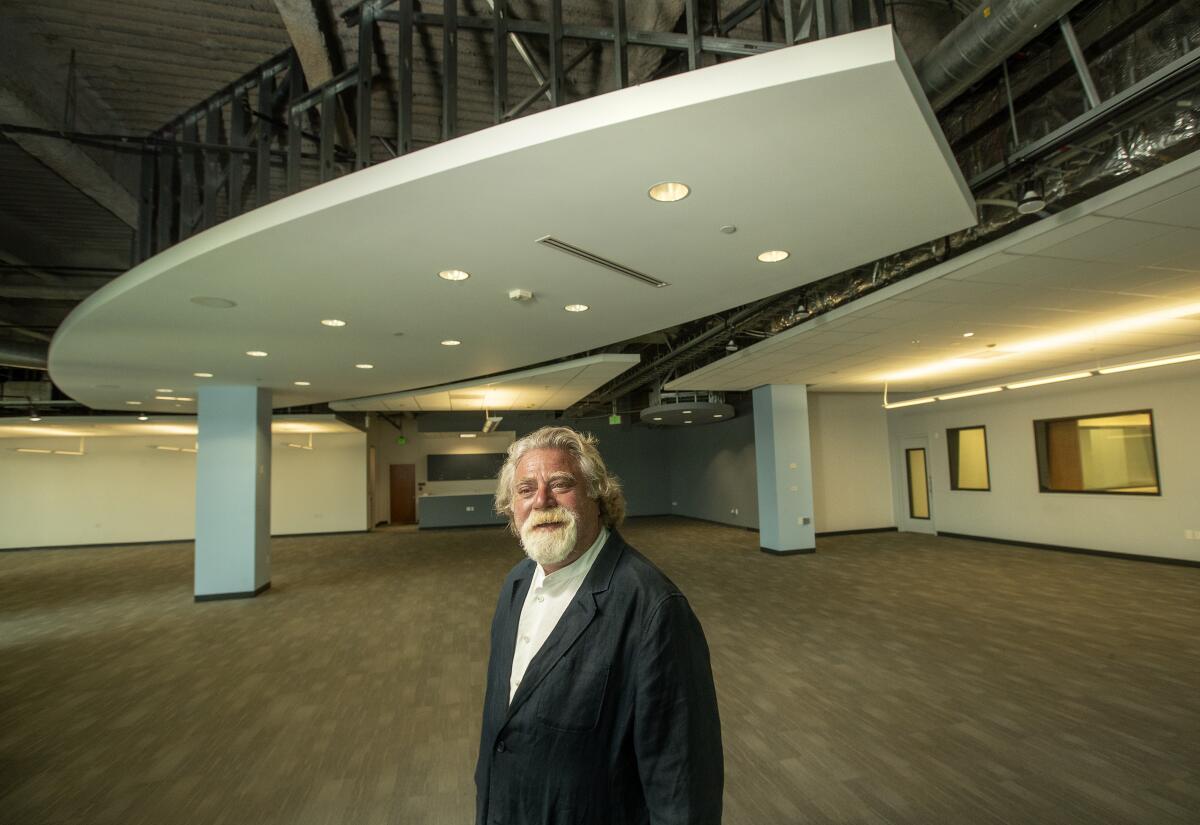
- Share via
It came as a revelation to executive Sheldon Lewenfus that workers at his healthcare management company performed their jobs well at home after the pandemic forced them to retreat from their offices in Woodland Hills last year.
“I am sort of old school, but I was quite surprised that the situation worked out,” he said. “Productivity was the same; no loss of clients. Everybody seemed pretty content.”
The success prompted the company, MedPoint Management, to shed half of its office space in an upcoming move to new quarters while keeping its staff of about 800 workers intact. Half of them will work mostly at home and the rest will toil at home some days and in the office on others.
Such hybrid work schedules promise to become the norm for many companies. It’s a revolutionary change for most businesses that is celebrated by a significant chunk of employees, workforce surveys show.
Building owners are watching nervously as office tenants weigh whether to reduce how much space they lease. Also on edge are restaurants and stores that depend on a daily stream of office workers to stay afloat. Those landlords and businesses have workers of their own who wish to stay employed.
The pandemic-imposed disruption of the nation’s vast office rental market is in early stages, and coronavirus mutations such as the highly infectious Delta variant add to the uncertainty.
Many companies are still undecided about whether they will require their employees to return full time after the pandemic is subdued and what their offices should look like when they do come back. Some managers might even want additional office space to give their employees more literal breathing room between one another.
The pandemic cracked the unspoken agreement between many employers and their workers to keep personal issues away from the job. Will change follow?
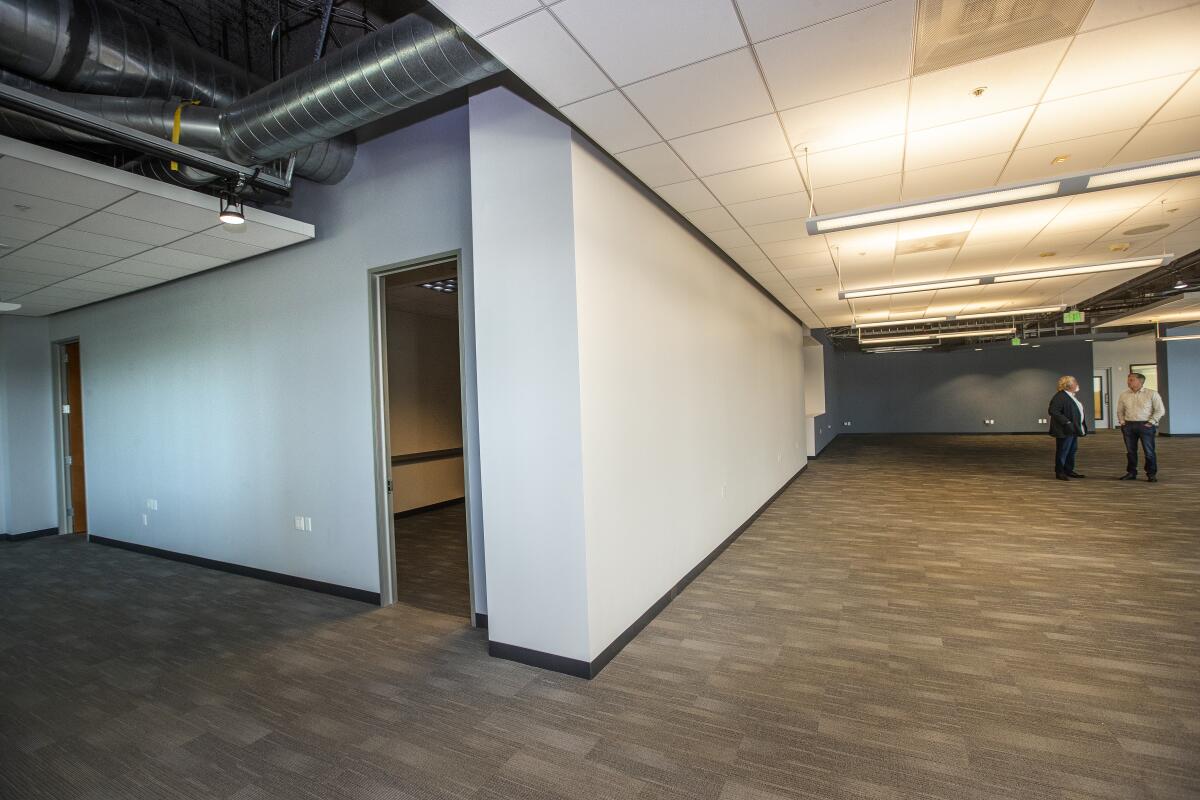
MedPoint’s leaders had to decide sooner than most what to do because their lease for 110,000 square feet in the building they occupied for the last 15 years is expiring. The forced work-from-home experiment gave them confidence to make a move they may have made later anyway, said Lewenfus, vice president of business development.
“I think quite candidly that COVID has advanced us 10 years into the future because I wouldn’t have ever seen downsizing space and having employees work from home, but that’s sort of where it’s going,” he said. Other healthcare companies are considering similar moves “because it seems to be working.”
How widespread such space reductions will be remains to be seen. After months of rising vacancy, the Los Angeles County office rental market showed early signs of stabilizing in the second quarter as the number of leases being signed picked up and some substantial companies including Lionsgate and BuzzFeed quit trying to sublease offices they weren’t using.
Overall vacancy in buildings reached 17.6% in the second quarter, up substantially from 13.9% in the same period last year but little changed from the first quarter, property brokerage CBRE said.
Office developers hope the rental market has hit bottom, but many are waiting to see what types of offices future tenants are going to want before building new ones, according to the summer Allen Matkins/UCLA Anderson Forecast.
Aquent, which provides temporary workers to marketing firms and other creative businesses, is opting out of offices almost altogether and will keep nearly everyone working at home from now on.
The company has offices around the country including five in California that it is closing permanently, executive Erin Bloom said.
Aquent will go from having about 200,000 square feet of offices to 24,000 feet, maintaining its computer hardware in a Seattle building for security and a small office in suburban Boston where the company is based and records are kept. Its remaining unwanted leases expire this year, Bloom said.
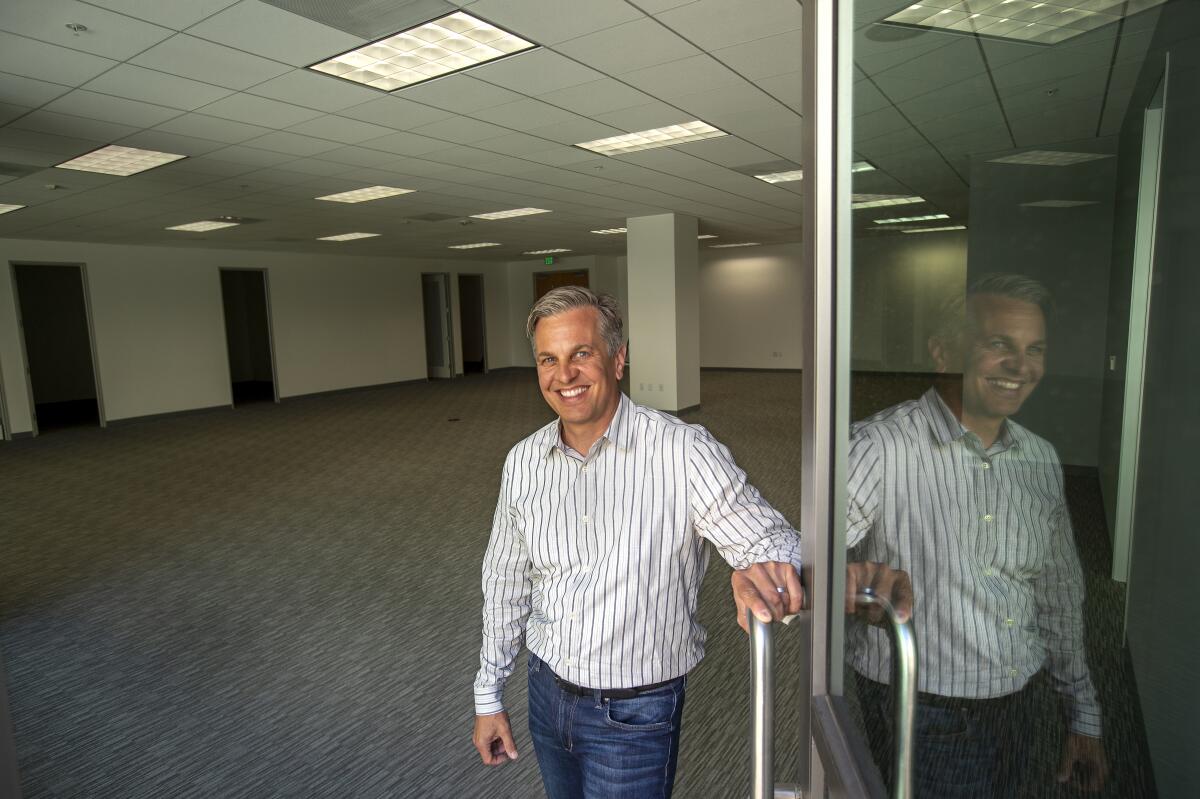
A large portion of the staff, which includes talent recruiters, was already working from home a few days a week when most of the nation’s office operations abruptly shut down in March 2020 to slow the spread of the coronavirus.
“We were not sure what was going to happen and very quickly we realized, ‘Wait, this is fantastic,’” said Bloom, Aquent’s head of culture and community. “Our people finally have the flexibility they were looking for.”
Business has increased since the pandemic lockdown started, she said, so Aquent concluded that “we have all these offices sitting vacant and we really don’t need to return.”
Aquent didn’t disclose its savings from shedding leased offices, but real estate costs are typically a company’s largest expense after payroll.
Some of the savings will be used to boost employee benefits, Bloom said, including contributions to workers’ 401(k) accounts and help paying home utility costs, which tend to increase with remote working. Other money will be used on things that bring the staff together remotely, such as online speakers and book clubs, and for in-person events, such as happy hours, conferences and team-building social gatherings.
Certain events may involve traveling long distances to bring staffers together, she said, because some have chosen to move nomadically after being unburdened of the need to clock in at an office.
“It’s really forcing us to get very creative about what our staff is looking for and on what terms they want to get together in person,” she said.
Most companies won’t be letting employees set the terms for joining each other, though, with many bosses such as Reed Hastings of Netflix already commanding that their workers return to the office en masse.

There are many reasons white-collar businesses like to have their employees together, including the belief that people toiling in isolation can lose their personal connection with their company.
“Having an office space reinforces company culture, so you don’t have people constantly leaving if they feel they are free agents working from home,” said Michael Soto, a director of research for real estate brokerage Savills.
Companies that place a high value on collaboration to achieve goals in fields such as technology, media and entertainment have been expanding their rented space in recent years and “want everyone back in the office to create a good corporate culture,” Soto said.
Netflix, the largest office tenant in Hollywood, has said it will bring everyone back after Labor Day, and financial firms such as Goldman Sachs and Morgan Stanley are demanding that work in the office resume.
Most companies are keying on a September office return when kids are back in school, Soto said, though Microsoft Corp. and Apple recently announced that they are pushing back office reopenings by at least a month to October in response to a surge in COVID-19 cases. Amazon.com Inc. just said it would not expect U.S. employees to return until next year.
For industries forced to compete for desirable employees, the number who end up coming in every day will be decided by the workers themselves, said Michael White, an architect who focuses on the needs of media and technology businesses at Gensler, where he is a managing director.
“Talent, at the end of the day, is going to be making the decision on this,” White said. “Companies won’t.”
After decades in retreat, employees make demands for higher pay and flexible schedules
Those decisions are still up in the air, according to client surveys by Gensler.
A survey by human resources trade group SHRM shows a wide range of preferences among workers, with 31% of U.S. workers saying they would prefer to work fully remotely, matched by another 31% saying they want to work fully in person. Among people preferring a home-and-office split, 22% want to work remotely most of the time and 16% want to work mostly in person.
Managers generally desire face time. A recent report by SHRM showed 72% would prefer to have all their subordinates working in the office. A majority of bosses also acknowledged they consider remote workers more easily replaceable than on-site workers and think remote work is detrimental to employees’ career objectives.
White cautions against drawing conclusions from employee surveys because respondents are still under duress from the pandemic.
“We simply don’t really know that when the fear of virus goes away whether people’s feelings around coming back into the office will change,” White said, “but there is still a fairly significant need that most employees, and certainly most companies, see for the office in a very profound way.”
Some clients and companies White knows are exploring shrinking their offices, he said, “but broadly speaking we are not seeing that.”
Tension over returning to the office is a chicken-and-egg dilemma for many who are vaccinated and might come back voluntarily if others did too, he said. “You’ve got to have a groundswell of people to be here for more people to come.”
Offices meant to appeal to them should have more “we” space than “me” space, he said, places where people can team up and work side by side or unwind together while eating lunch or watching a sporting event.
“There is a realization now that the office space needs to compete with your home office,” he said, because it’s been proved people can easily perform many tasks remotely. “What they can’t do is get the social engagement, cultural engagement, training and coaching” that happens at work.
The size and configuration of offices coming out of the pandemic work-from-home experiment will vary widely by industry and individual firms as they reassess how they want to use their space, said Jeff Ingham of real estate services firm JLL, who tracks global office patterns.
Well-heeled, profitable firms in some cases have been keeping their offices the same size but reconfiguring them to keep the people who do come to the office more comfortably distanced from one another.
“Typically, lower-margin companies” are the ones focusing on reducing space, he said.
Some companies with higher profit margins also see this work-from-home era as an opportunity to shed space, but are holding off on making decisions as the pandemic plays out, figuring that employees’ feelings will come into better focus when the world is more safe, Ingham said.
With its lease expiring, MedPoint didn’t have the luxury of waiting and chose a smaller office in a nicer building at the Sherman Oaks Galleria that offers employees amenities such as restaurants, a gym and movie theaters, said real estate broker Greg Lovett of Cresa, who represents MedPoint.
Some MedPoint workers with different schedules will share desks and computers when they come to the office, and some will not after the move at the end of the year.
“If they aren’t OK with sharing a desk, we’ll accommodate that,” Lewenfus said. “We want to honor employees’ requests and needs.”
More to Read
Inside the business of entertainment
The Wide Shot brings you news, analysis and insights on everything from streaming wars to production — and what it all means for the future.
You may occasionally receive promotional content from the Los Angeles Times.




